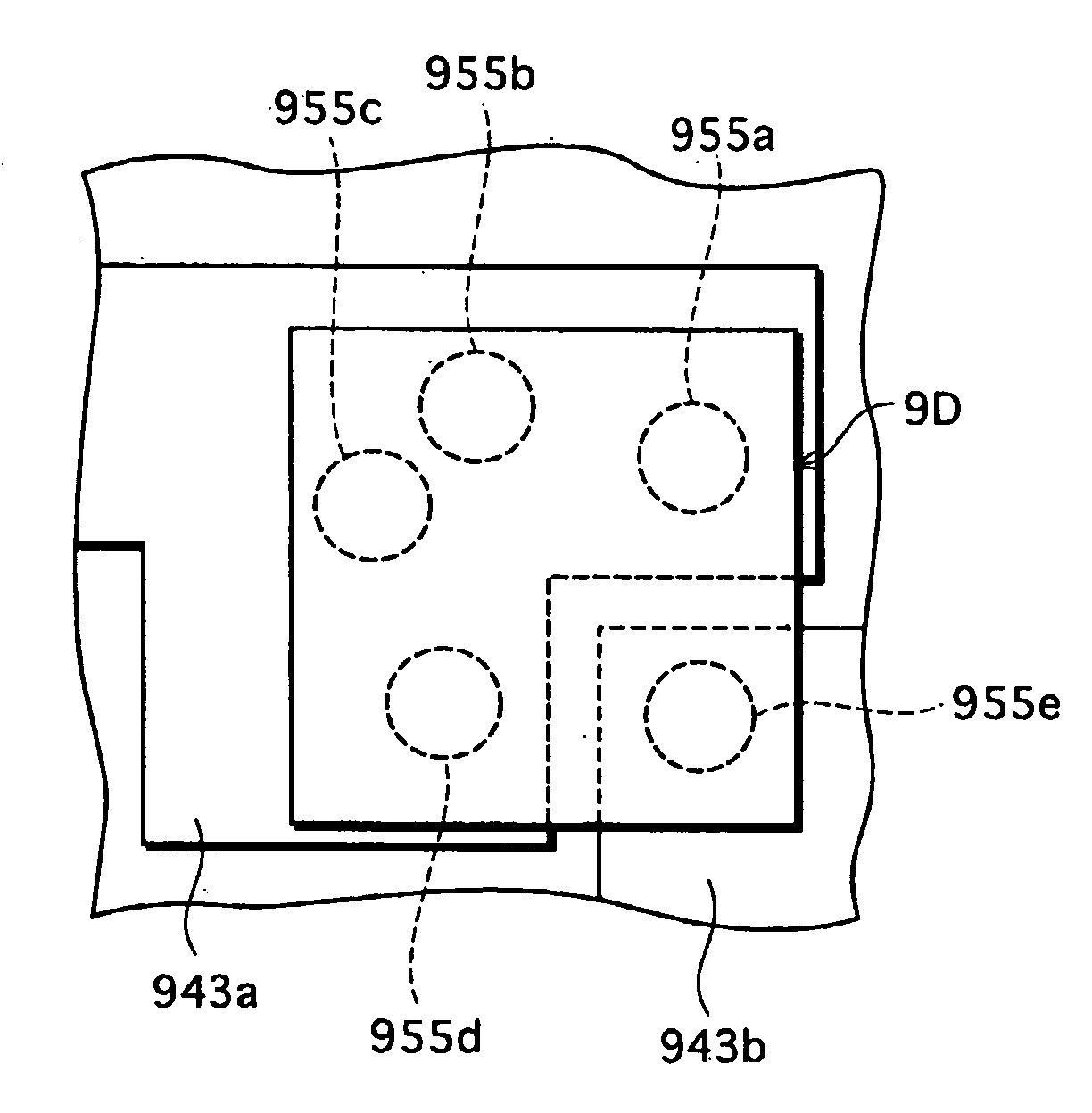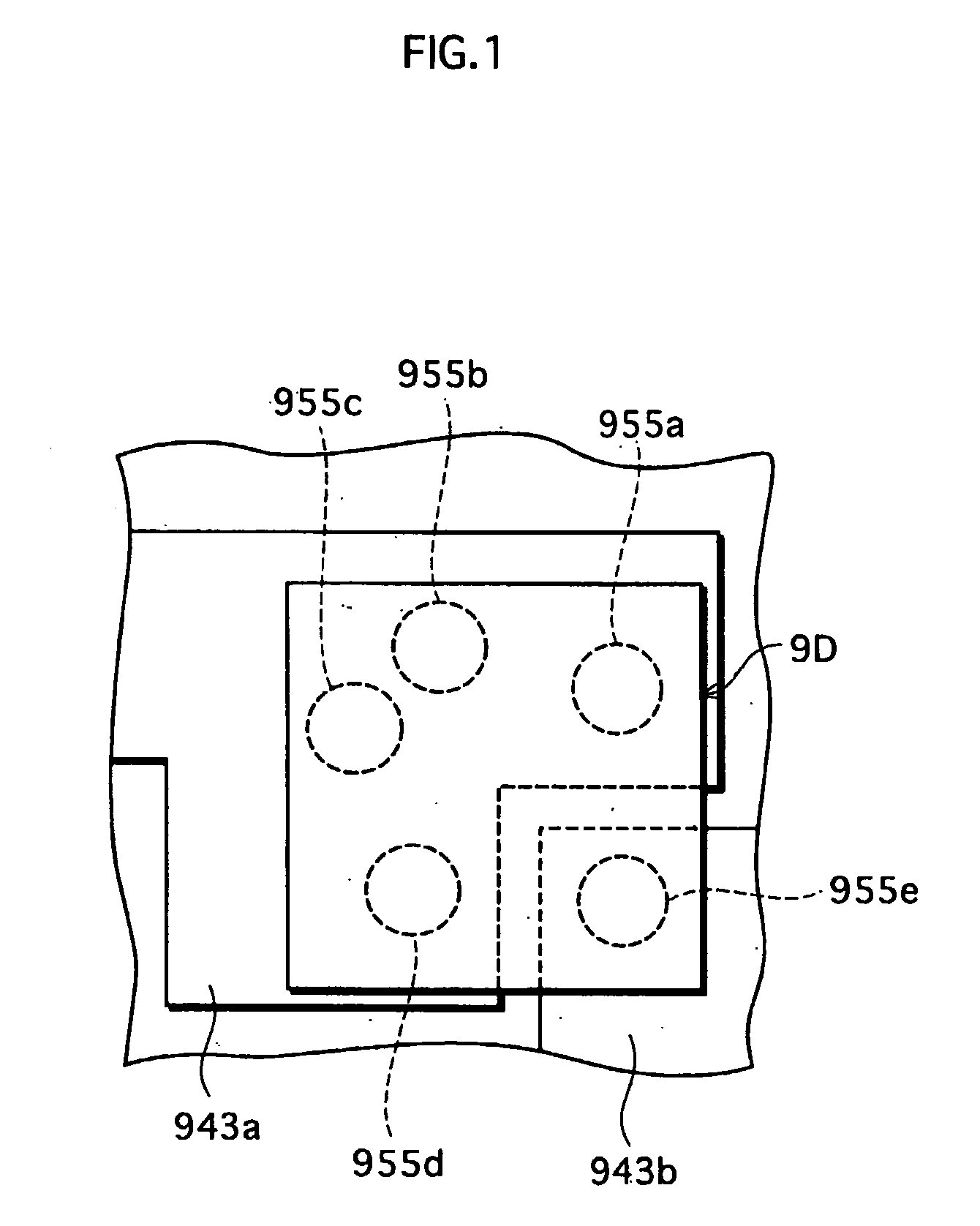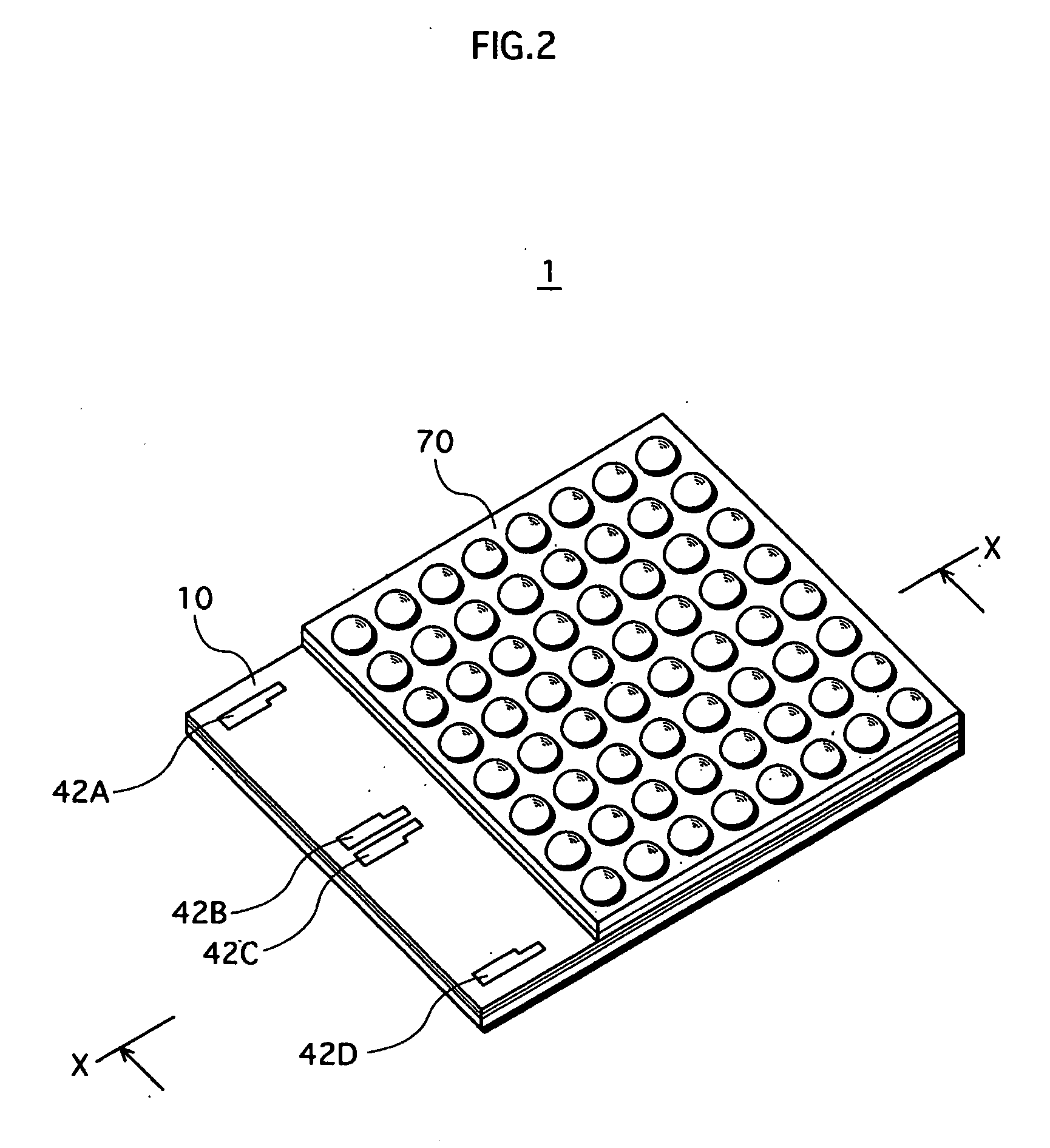Light source, manufacturing method of light source, lighting apparatus, and display apparatus
a manufacturing method and technology for light sources, applied in the direction of semiconductor devices for light sources, lighting and heating devices, planar light sources, etc., can solve the problems of conductivity failure, bump in very weak bonding, led bare chips may stop lighting up, etc., to enhance the conductivity and enhance the bonding reliability of the smaller-area electrod
- Summary
- Abstract
- Description
- Claims
- Application Information
AI Technical Summary
Benefits of technology
Problems solved by technology
Method used
Image
Examples
first embodiment
[0173]In particular, the present LED bare chip is larger than the LED bare chip in the first embodiment, with one side of the bottom surface having a length of 1 mm (in comparison, one side of the bottom surface of the LED bare chip has a length of 0.3 μm). Accordingly, the distance between adjacent bumps 191a tends to be large. When the distance between adjacent bumps 191a becomes large in this way, uniform electric current density tends to be impaired, due to positions of the bumps 191a in the p-electrode 2Lpa. Accordingly, the brightness variations tend be more obvious. Therefore, for an LED bare chip having a large light emitting area, it is considered effective to arrange bumps at the side of the p-electrode in an orderly formation, for the purpose of maintaining uniform heat dissipation characteristics of the surface, as counter measures against the brightness variation problem.
example 2
[0174](B) Example 2
[0175]FIG. 15B shows an LED bare chip 2Db according to the example 2 in the modification example 3. As FIG. 15B shows, the structures of the LED bare chip 2Db are substantially the same as in the example 1, such as in form and size of the bottom surface, and a ratio between the area of the n-electrode and the area of the p-electrode. However, in the example 2, two bumps 192b exist for the n-electrode 2Lnb, and 26 bumps 191b exist for the p-electrode 2Lpb. The bumps 191b are arranged in an orderly formation. The cross sections of the bumps 191b and of the bumps 191a are substantially round, respectively. With regard to a cross sectional area for each bump, the cross sectional area 2Snb of one bump 192b is larger than the cross sectional area 2Spb of one bump 191b.
example 3
[0176](C) Example 3
[0177]FIG. 15C shows an LED bare chip 2Dc according to the example 3 of the modification example 3. As FIG. 15C shows, the structures of the LED bare chip 2Dc are substantially the same as in the example 1, such as in form and size of the bottom surface, and a ratio between the area of the n-electrode and the area of the p-electrode. However, the example 3 is different from the examples 1 and 2, in that an n-electrode 2Lnc exists like an island in the substantial center of the bottom surface of the LED bare chip 2Dc. In the example 3, one bump 192c exists for the n-electrode 2Lnc, and 32 bumps 191c exists for the p-electrode 2Lpc. The bumps 191c are arranged in an orderly formation. With regard to the cross sectional area of each bump, the cross sectional area 2Snc of the bump 192c is larger than the cross sectional area 2Spc of one bump 191c. [0178]5. Substrate
[0179]In the embodiment, the substrate 10 is for mounting thereon a plurality of LED bare chips Dnm, how...
PUM
 Login to View More
Login to View More Abstract
Description
Claims
Application Information
 Login to View More
Login to View More - R&D
- Intellectual Property
- Life Sciences
- Materials
- Tech Scout
- Unparalleled Data Quality
- Higher Quality Content
- 60% Fewer Hallucinations
Browse by: Latest US Patents, China's latest patents, Technical Efficacy Thesaurus, Application Domain, Technology Topic, Popular Technical Reports.
© 2025 PatSnap. All rights reserved.Legal|Privacy policy|Modern Slavery Act Transparency Statement|Sitemap|About US| Contact US: help@patsnap.com



